





Documentation in 2025: Our Take on the State of Docs Report
How platformOS and DocsKit align with the trends shaping documentation in 2025.
The State of Docs 2025 report opens with a bold but increasingly familiar claim: documentation has outgrown its support-only role. Today, it plays a central part in product adoption, user success, and long-term engagement. But the challenge remains: how do you prove the value of documentation when its greatest success is preventing problems before they arise?
At platformOS, we believe that documentation is an integral part of any product. That’s why we created DocsKit, a developer- and user-friendly framework that helps teams create clear and effective documentation. For us, documentation is an engine for user success, shaping the customer journey from the first interaction to advanced adoption.
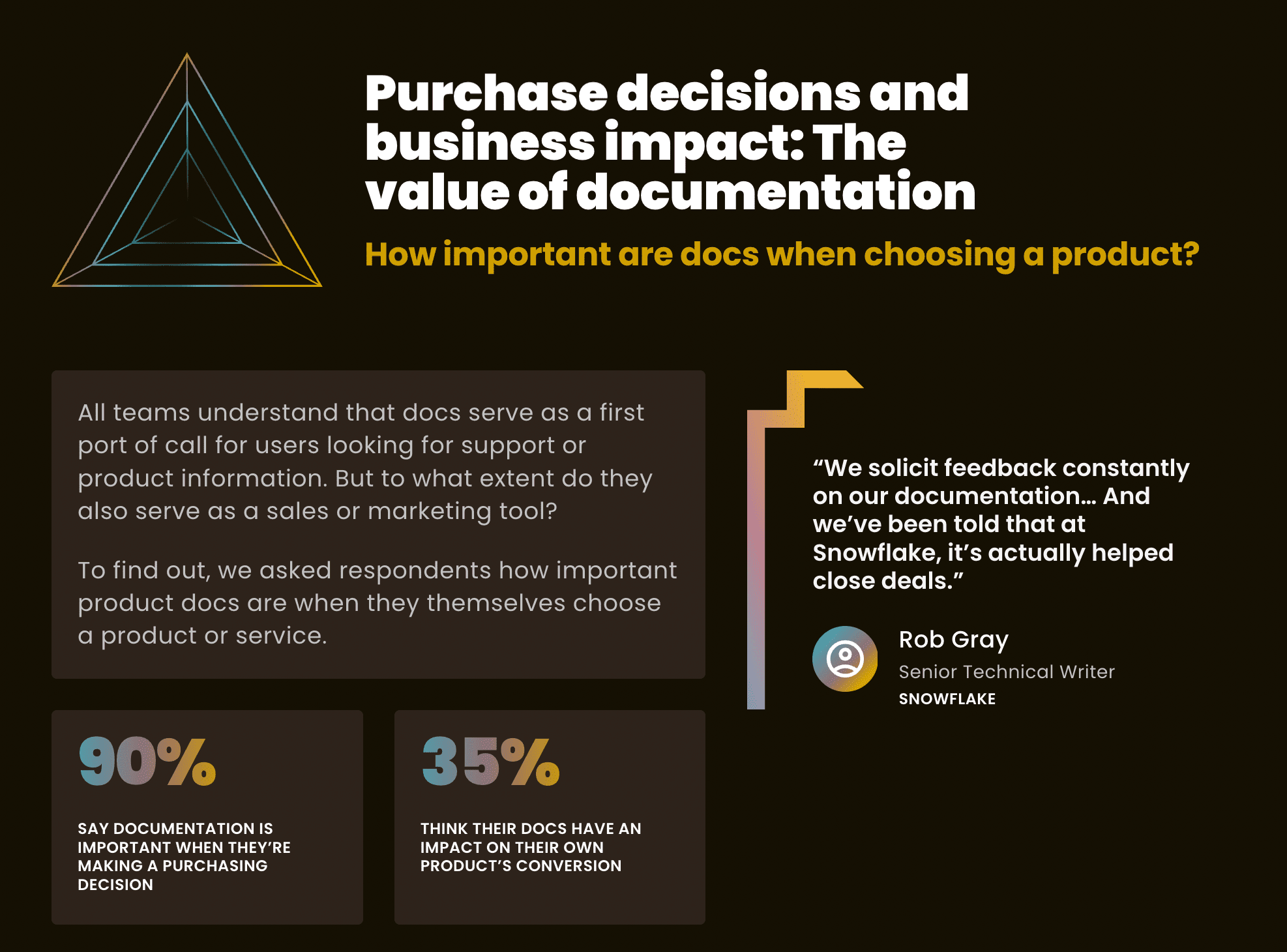
The report confirms what many of us working in documentation have long known: great docs influence buying decisions. An overwhelming 90% of respondents say documentation affects their own purchasing choices, yet only 35% believe their documentation is helping convert customers. The gap between aspiration and impact is clear, especially when so many teams still see documentation as a post-sale resource.
At platformOS, we’ve seen how documentation can shape early decision-making. When prospects explore documentation sites, they’re evaluating product fit, technical feasibility, and trustworthiness. This is especially true for developer platforms being explored by enterprise clients, where looking into the documentation often precedes a sales conversation.
By supporting AI search, structured content, and quick iterations, we help teams turn their documentation into a powerful self-service channel. This includes core technical content, but also onboarding materials and pages designed to help prospects evaluate the product. For users, that means faster answers and clearer pathways. For businesses, it means lower barriers to adoption and a higher chance of turning interest into action.
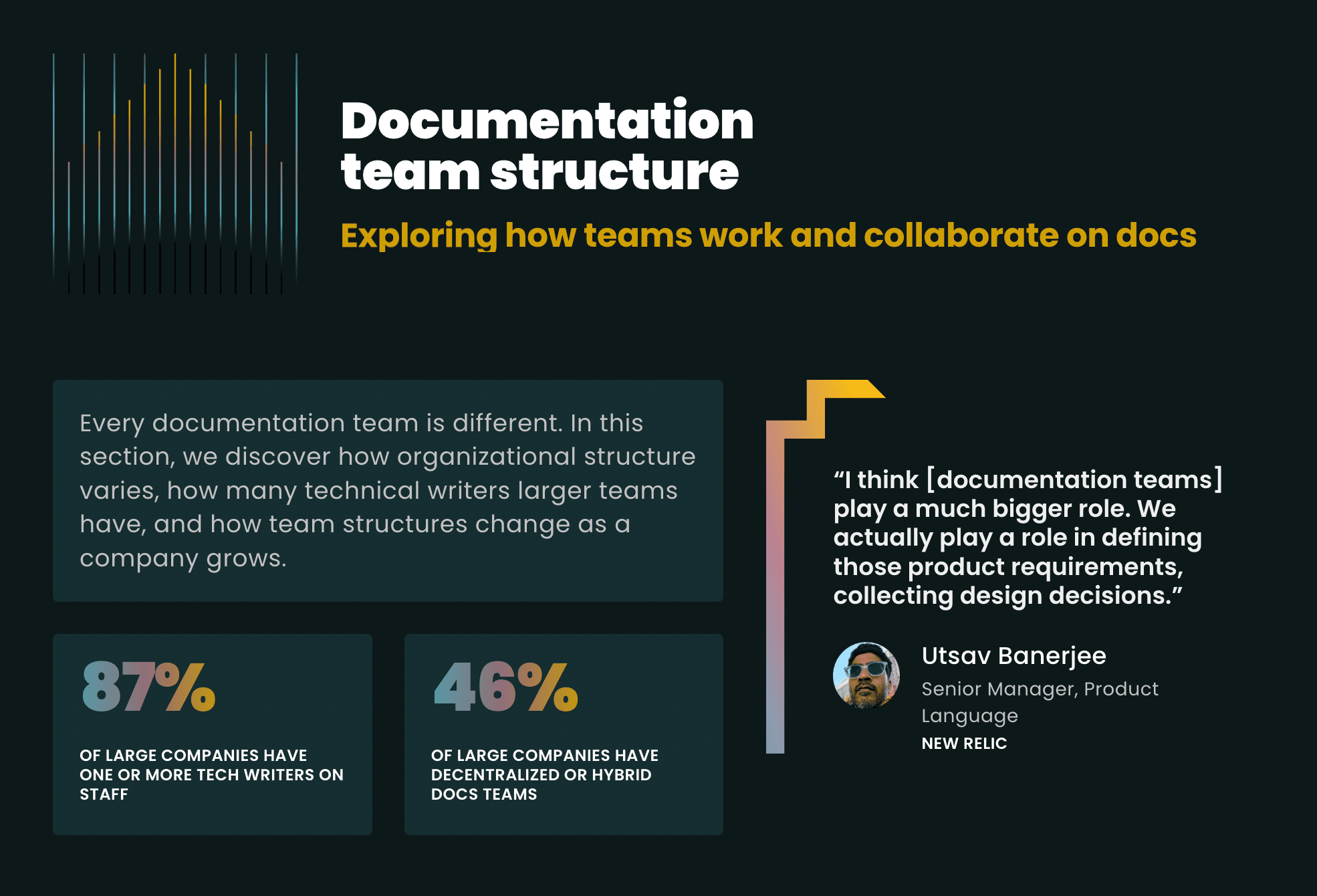
The report highlights how documentation teams evolve as companies scale. While most large organizations now have at least one technical writer, nearly half operate in decentralized or hybrid models. That flexibility comes with a risk: as engineering teams grow faster than docs teams, many companies hit a “danger zone” where features go undocumented and quality suffers. Mid-sized companies are especially vulnerable to this imbalance.
We’ve worked with teams in exactly this phase: growing quickly but struggling to keep documentation aligned across teams and releases. DocsKit is designed to support these environments. Its Git-based workflow enables engineers and writers to contribute in parallel, with clear structure and version control. We also offer a range of contributor paths to accommodate different skill levels and areas of expertise when someone is writing, reviewing, or suggesting edits.
We’ve also seen how early collaboration improves outcomes. Whether it’s product teams, government stakeholders, or developers, bringing documentation into the process from the start prevents debt and builds better products. With the right workflow and tools, cross-functional documentation work becomes the natural way teams collaborate.
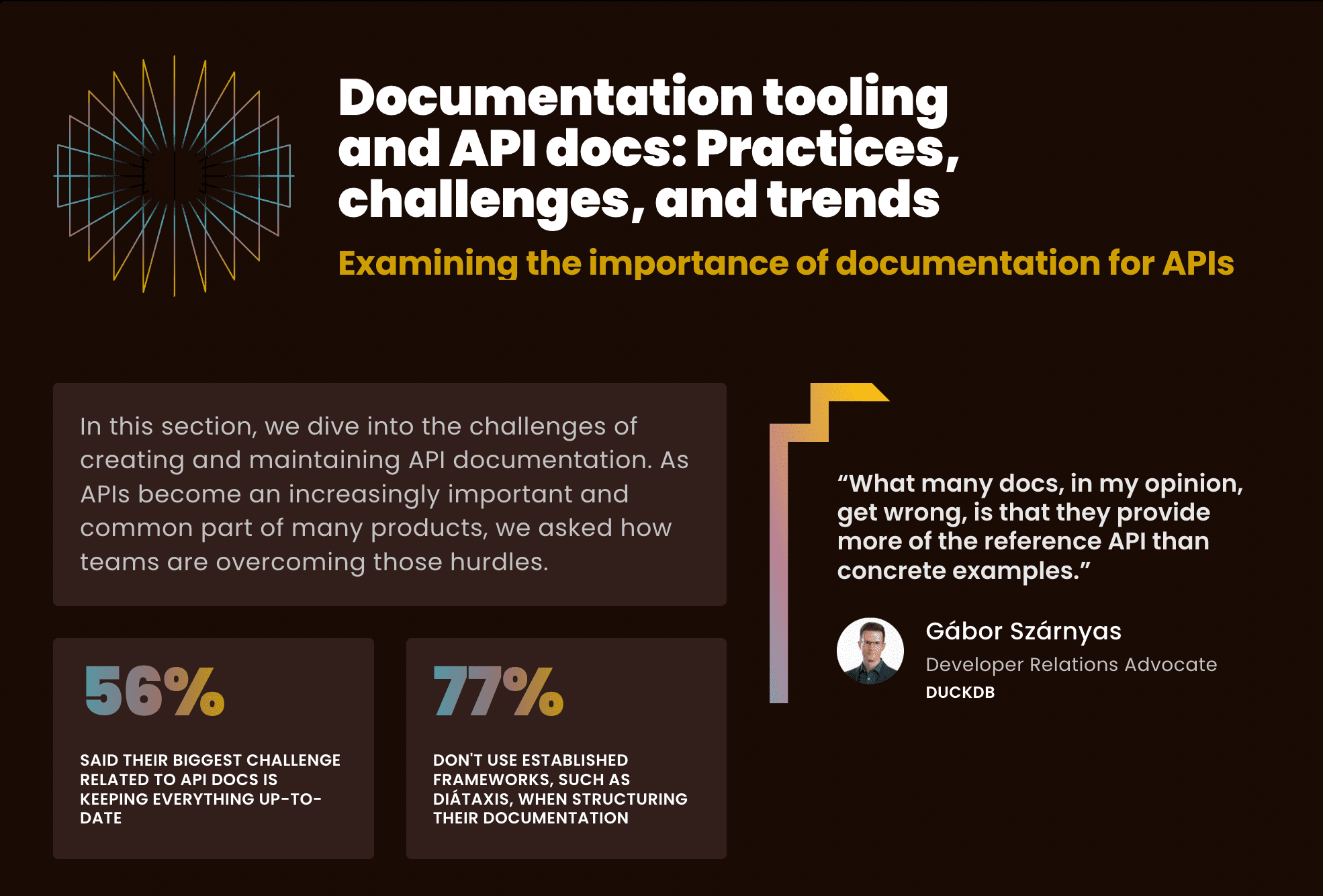
According to the report, most teams now manage their documentation using Git-based version control: a clear sign that Docs as Code has become the norm. But challenges remain, especially around API documentation. More than half of respondents said keeping API docs up-to-date is their biggest pain point. And while reference content is common, many teams still lack interactive examples or automated update workflows.
At platformOS, we built DocsKit to work seamlessly with modern tooling while helping teams reduce the overhead of maintaining documentation. It supports a Docs as Code approach by default, with Git-based workflows, Markdown content, and automated preview environments. But beyond the basics, DocsKit also supports structured content models, contributor-friendly templates, and optional AI features that help ensure content remains clear and consistent over time.
We’ve seen that the best API docs combine technical accuracy with real-world guidance. In our projects, we work closely with both engineers and writers to ensure documentation includes practical examples, use cases, and developer-friendly language.
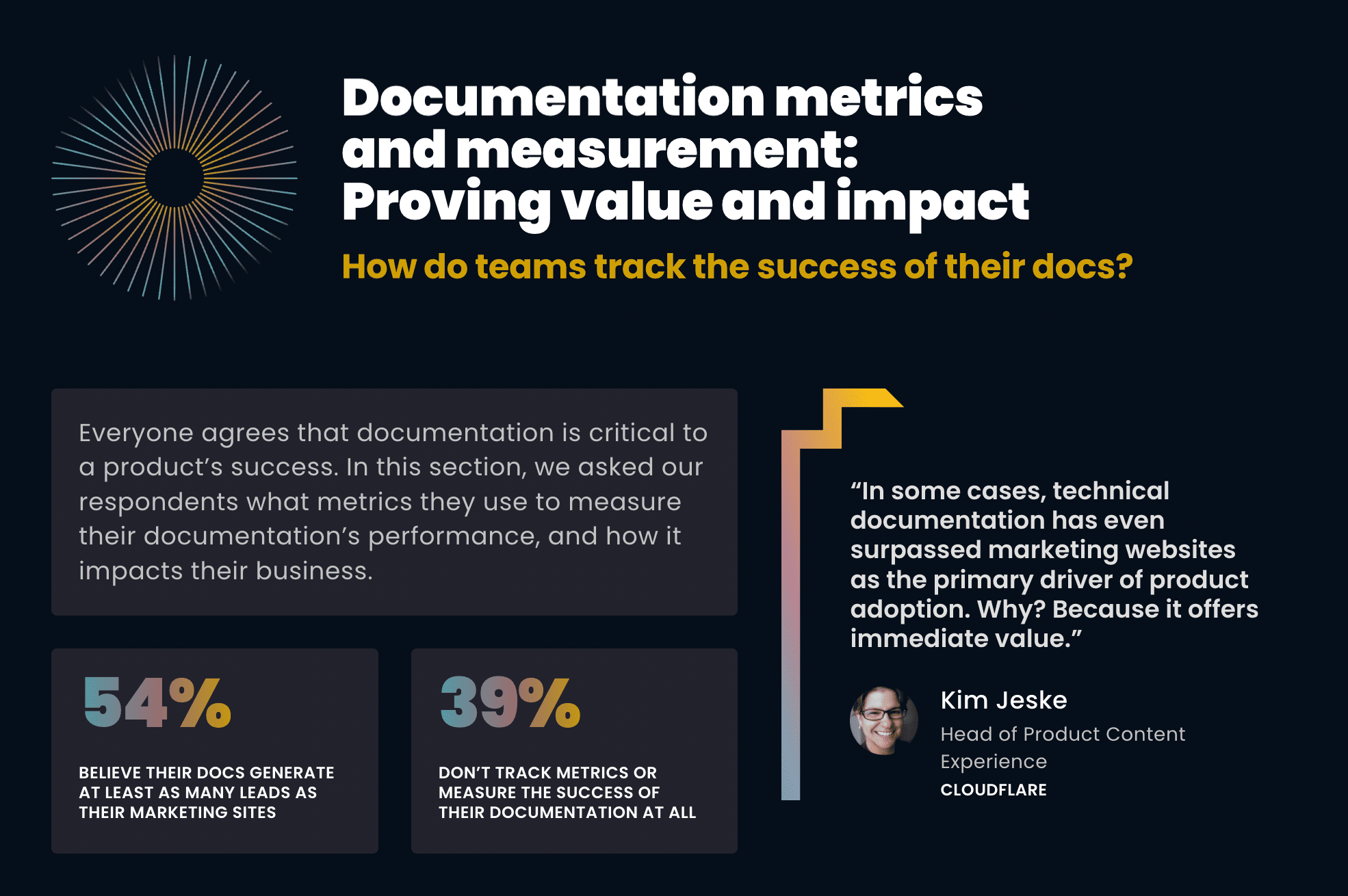
Despite wide agreement that documentation is essential, the report reveals that many teams still struggle to prove its business value. Nearly 40% of respondents don’t track metrics at all, and few tie documentation to outcomes like lead generation, onboarding success, or customer retention. Instead, most rely on surface-level data like page views, which don’t always reflect whether the content is actually helping users.
At platformOS, we approach documentation measurement as a balance of analytics and user research. DocsKit supports analytics integrations for basic metrics, but we go further by encouraging teams to listen to their users directly. In our projects, we gather insights through in-doc feedback, usability testing, and stakeholder interviews. This helps us understand what users are doing, why they’re doing it, and how we can improve.
We believe that good documentation grows from real conversations with your audience. Metrics matter, but without qualitative input, they risk becoming disconnected from user needs. By combining both, we help teams identify what’s working, what’s missing, and what content really drives outcomes like self-service, satisfaction, and sustained engagement.
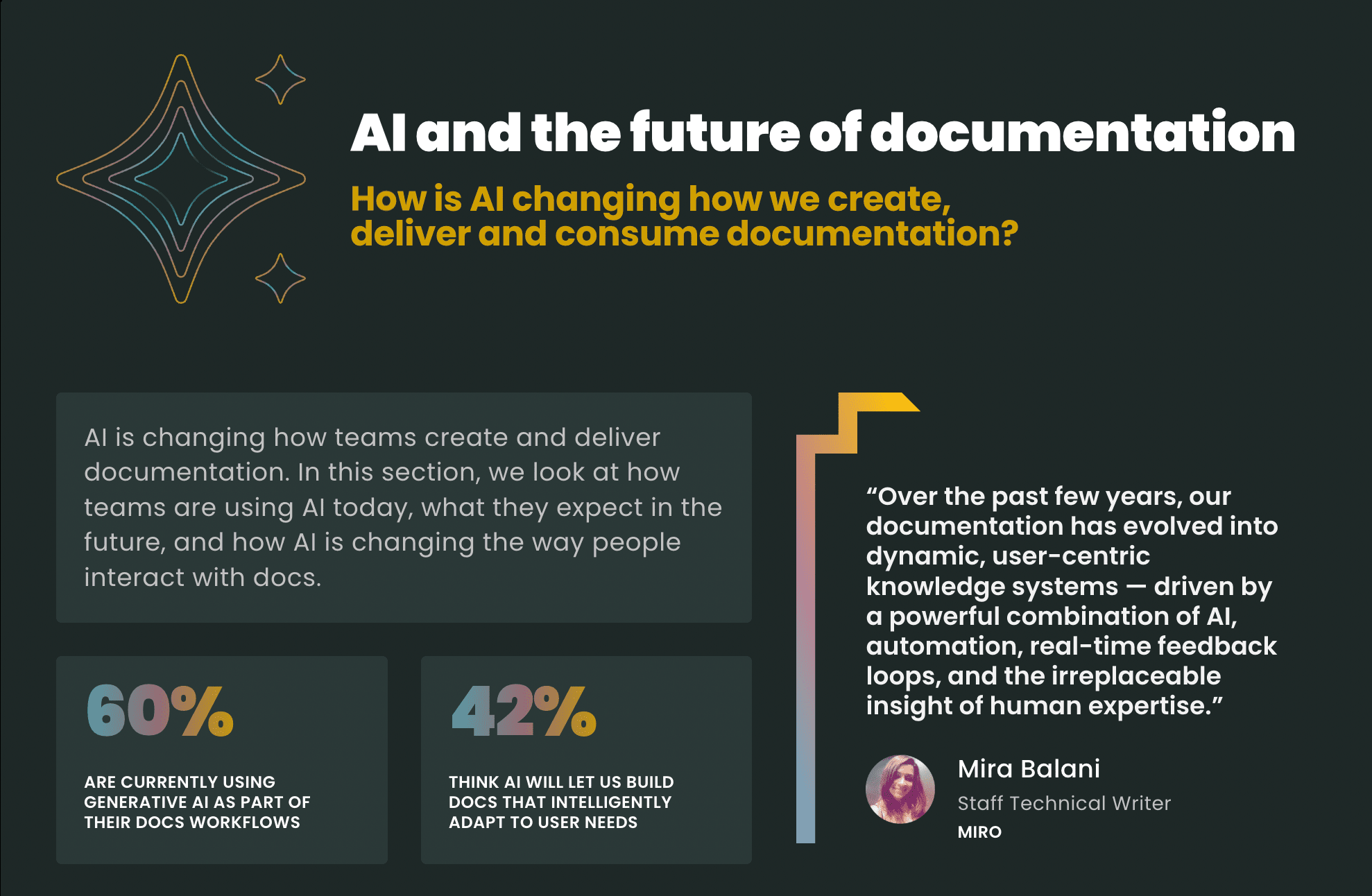
The report shows just how deeply AI has started to influence documentation workflows. Around 60%Sixty percent of teams are already using generative AI in some form, mostly for writing and editing. Even more striking is the shift in expectations: nearly half of respondents believe that documentation will soon adapt to users’ needs dynamically, and many see a future where AI is the primary way users consume content.
At platformOS, we’ve embraced AI as a way to support human insight, not replace it. platformOS and DocsKit are built with AI-readiness in mind, using structured content, semantic URLs, and embedding support to power smarter search and contextual assistance. But the real power comes when we pair these foundations with tools that improve the writing process itself.
That’s why we partnered with EkLine, an AI-powered tool that supports better writing through smart, automated suggestions. EkLine uses large language models to analyze documentation content, detect tone, clarity, and style issues, and provide meaningful suggestions that go far beyond traditional rule-based linters. It helps rewrite vague sentences, improve flow, and simplify complex language, all while respecting the context of your content.
As AI tools become more embedded in documentation workflows, we believe writers will take on even more strategic roles: designing information structures, curating content for both human and machine consumption, and ensuring that AI works from a base of clear, helpful, high-quality content.
The report ends with a strong message: documentation is no longer an afterthought. It's becoming central to how companies attract, activate, and retain users. AI is transforming how content is created and consumed, but it doesn’t reduce the need for skilled writers but raises the bar for strategy, clarity, and structure.
At platformOS, we see this shift every day. Teams aren’t just publishing docs, they’re building user experiences, scaling onboarding, supporting developers, and shaping business outcomes. With DocsKit, we support this evolution by offering a modern, flexible, and AI-augmented framework that helps teams turn documentation into a strategic asset.
Looking ahead, we believe the most successful documentation teams will be those who:
Design documentation as part of the product experience, not separate from it
Measure success based on real user outcomes, not just traffic
Use AI thoughtfully to support writing, review, and delivery
Keep humans at the center of quality, structure, and trust
As expectations around documentation continue to grow, so do the opportunities.Docs are no longer just about helping people when they’re stuck. They’re about helping people succeed, right from the start.
Ensure your project’s success with the power of platformOS.